|
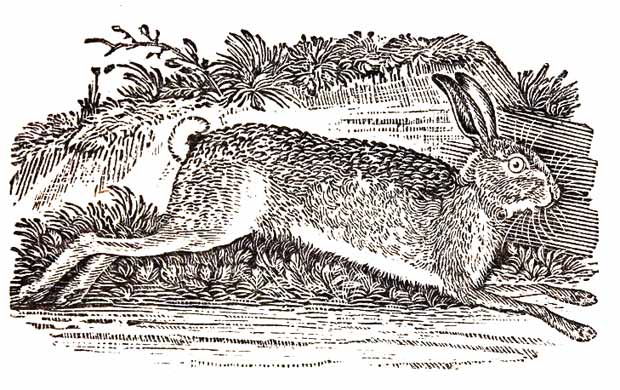
The Avebury Hares - Wiltshire's Traditional Love Of Hare Symbolism Traceable All The
Way Back To The Construction Of Avebury's Henges.

Click on the thumbnails below to view larger versions
1. Introduction
When I started really looking at Avebury the last thing on my mind was the existence of stone hares. Although Wiltshire today is scattered with prints, drawings and bronzes showing single or fighting pairs of hares, I made absolutely no connection between these homely animals and the Avebury Monoliths.
The prominence of stone hares at Avebury makes me wonder if the Windmill Hill people who initiated the building of Avebury thought of themselves as "The Tribe of the Hare" or the "Hare People".
2. The Cove Stone II Hare
My fascination with the Avebury hares started when Professor Meaden emailed telling me where to find the incredible example carved onto the western face of Cove Stone II. I have photographed this animal from two different angles as the overall effect changes markedly depending on where you stand:
 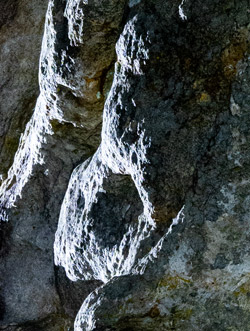
A beautifully rendered carving hidden in plain view. I wonder how surprised many of the drinkers sitting outside the Red Lion pub would be to learn that they are being studied from across the road by a sacred stone hare as old, or possibly older than, the pyramids of Egypt.
3. The Cove Stone I Hare
The slanting top of this impressive stone is difficult to interpret until you find the subtle bulbous eye on the top of the south facing elevation. I am pleased to have solved the puzzle:
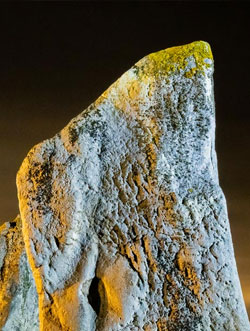

The result is a gigantic hare with stylised ear, looking upwards into the eastern sky, presumably to venerate the dawn. I first spotted the eye on a large tourism poster of the Cove, and then I returned to Avebury with a strong light to confirm the discovery in person. My interpretation of this monolith as a stone hare is supported by the exisitence of the other hare on neighbouring Cove Stone II. The Avebury Cove used to be part of a large triad of monoliths comprising Stone I and II and a third an missing monolith. These three would have formed a sacred box or forecourt, designed to ceremonially catch the sacred light of the rising sun. The missing Cove monolith , a counterpart to our Cove Stone I, would also, I predict, have hosted a prominent carving of a hare. Of course, due to the tragic destruction of this third monolith, we can never know.
4 The Avenue Hare, Stone 32A, West Kennet Avenue
The Stone 32A Hare is apparently well known to those walking up the Avenue:

Apparently vandalised in medieval times and rebuilt, presumably by Keiller in the 20th century, this creature faces patiently eastward, presumably waiting for the sunrise. What strikes me is the amazing similarlity between the 32A animal and the Cove Stone II one. Same upright ears and enormous eye. It makes me wonder if 32A is a copy of the (presumably older) Cove Stone II version.
5. Right Profiled Paired Hares on Stones 102 and 103, Avebury Main Henge
I believe that the pairing of these hares in the Henge's south-east quadrant is an original discovery of mine with major implications for the understanding of Avebury, and its fertility religion:
 
The two right facing hares incorporated into Stones 102 and 103 are appropriatedly placed in the arc of a stone circle that Professor Meaden had alreadly linked to a neolithic early summer festival celebrating fertility. He shows (on p22 of his Avebury Stones book) that on May 8 every year the rising sun cast a shadow from a large Obelisk stone set in the centre of the Quadrant, and that this shadow was designed to touch a Vulva Stone set in the opposite part of the circle (in the same arc of monoliths hosting our hares). At this moment Avebury's builders believed the Great Goddess had been re-fertilzed by the Sky God, and the great cycle of nature could unwind for another year.
My discovery of 2 right profiled hare carvings in the same arc of stones as the Vulva stone could be seen as strong support for the view that the South-East Quadrant is especially concerned with fertility. These hares could be seen as moving clockwise around the pivotal Obelisk stone (much like dancers around a Maypole), and facing the Vulva stone down the line of the circle! Although these statues have different styles they do share similarly developed ears!
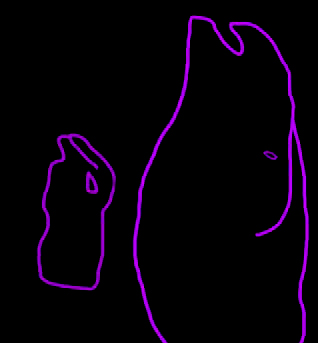
6. The Double Headed Hare on Stone 103, Avebury Main Henge
This wonderful double headed "Janus" like statue combines the right profiled hare discussed above, with a striking left profile hare, the latter being possibly anthropomorphic (see the image immediately below.
|
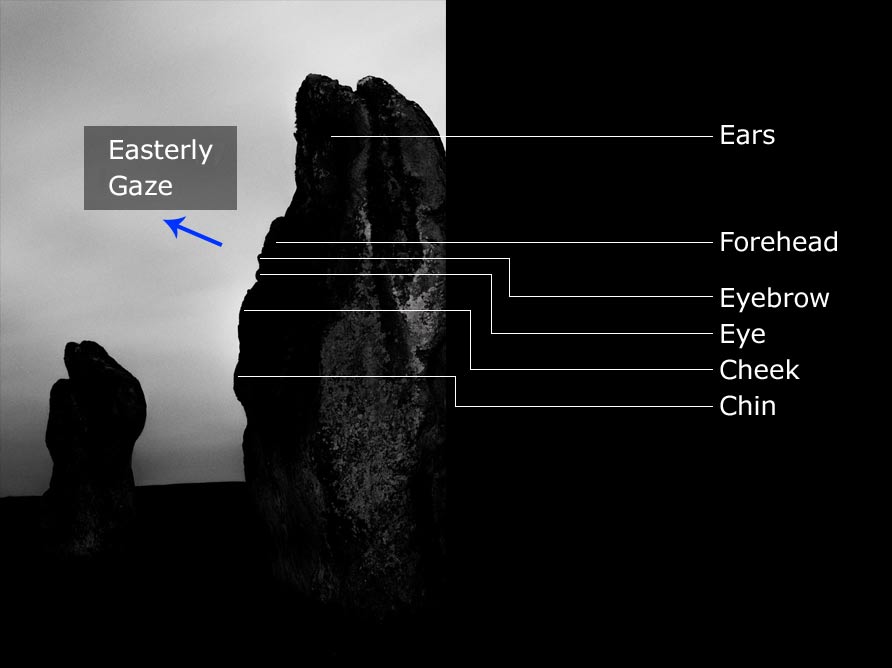
|
| |
|
| The left and right facing hares on 103 are shown separately below: |
| |
|
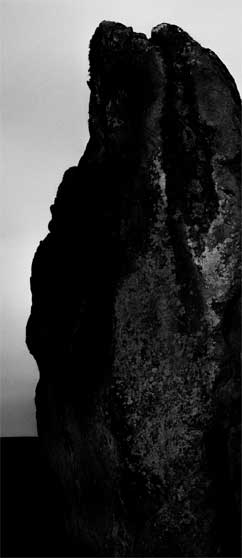 |
 |
| |
| And together in the animation below, notice how the animals share the same distinctive ears: |
|
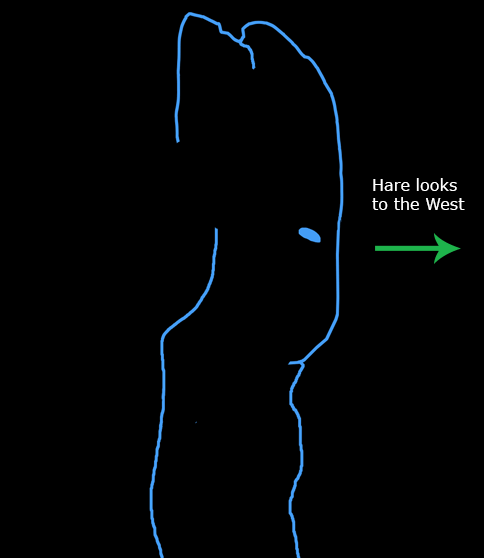
|
| |
|
This statue combines worship of both the east and west cardinal points, alpha and omega, the beginning and the end.
|
7. A Rebuttal
In September 2021 I came across a blog online which discussed my photo of the Cove Stone II hare shown above. This blog claims "There is much folklore surrounding hares, but as they weren’t introduced until 3000 years after the erection of this stone we can surmise that it is a more “modern” carving, perhaps carved by an Anglo-Saxon in preparation for a fertility ritual during the spring equinox".
3 things occur to me in response:
1. The claim that there were no hares in the UK during the neolithic is untrue - Lepus Timidus was in the country long before the time of Avebury, in fact since the last glaciation [see Dale Serjeantson "Review Of Animal Remains From The Neolithic And Early Bronze Age Of Southern Britain (4000 - 1500 BC)", Section 3.8 - Published by English Heritage, 2011, ISSN 1749-8775].
2. As to the claim that the hare on Cove Stone II was carved in Anglo-Saxon times, I would say this does not fit the evidence. The Cove Stone hare co-exists with, and is validated by, the close proximity of the massive and clearly neolithic hare statues on Stones 102 and 103. The consistent theme is conclusive proof of their united prehistoric status.
3. Another proof that the hare on Cove Stone II is both real and neolithic lies in its dual nature. What I mean by this is that when the hare is viewed from the side (an elevation not as yet photographed by me) it appears to morph into a strong image of a gigantic human face in profile. This amazing duality was discovered by Terence Meaden+ and is absolute proof of the hare's neolithic authenticity - such duality/multiplicity of imagery is uniquely the hallmark of the prehistoric style of Avebury's artists, as very many of my own photographs themselves prove. Artists of later millennia wouldn't have produced lithic work of this character, purpose, originality or cunning.
(+ See his text and photos in "Stonehenge, Avebury and Drombeg Stone Circles Deciphered", pp 128-9, Lambert Academic Publishing, 2016, ISBN 978-3-659-89725-2)
|